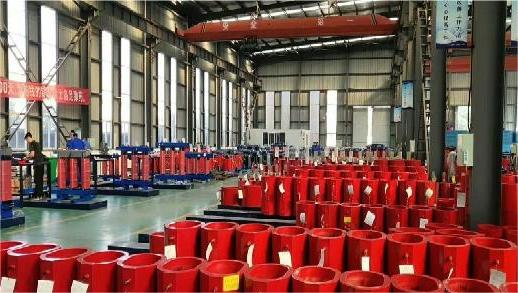
News

The cooling technology of dry-type transformers directly determines their load capacity, lifespan, and operational efficiency. Unlike oil-immersed transformers, dry-type transformers face greater challenges in heat dissipation due to their solid insulation materials. Industry data shows that optimized cooling systems can enhance overload capacity by 35% and extend lifespan by over 20%. This article transcends traditional cooling classifications, analyzing the evolution and innovation of thermal management through heat transfer principles and emerging technologies.
Heat dissipation in dry-type transformers involves the coupling of heat conduction, convection, and radiation. Experiments reveal that under natural convection, axial temperature gradients in windings can reach 15° C/m, while thermal radiation from the core accounts for 12% of total heat dissipation.
Asymmetric airflow channels in windings create chimney effects to accelerate air movement. For a 2500kVA transformer, optimized airflow channels increased wind speed from 0.3m/s to 0.8m/s, reducing temperature rise by 18K. Key parameters include:
- Vertical channel aspect ratio: 5:1 to 8:1
- Horizontal channel spacing: ≤1/5 of winding height
- Surface emissivity: >0.85 to enhance radiation
Axial fan arrays require precise airflow coordination:
- Single fan capacity: ≥200m³/h per kVA
- Distance between outlets and windings: <0.3m
- Noise compliance: EN 60076-11 standards
A data center project reduced energy consumption by 42% using variable-frequency fans synchronized with temperature fields.
Paraffin-based composite phase change materials (melting point: 85±2°C) embedded between winding layers absorb transient overload heat. A wind farm application demonstrated a 120% to 150% improvement in 2-hour overload capacity.
Copper microtube arrays (diameter: 0.5mm) embedded in epoxy resin, combined with cooling fluids (e.g., fluorinated liquids), triple heat dissipation efficiency. A Swiss lab prototype maintained hotspot temperatures at 98°C under sustained 125% load.
High-voltage electrodes (15kV) generate corona discharge to drive directional airflow, increasing local convection coefficients by 60%. A subway power system reduced cabinet temperature differentials from 25°C to 8°C using this technology.
Fiber optic sensors (spacing:≤30cm) along windings enable millimeter-level temperature monitoring. A smart substation detected a 3°C abnormal rise 5cm from the base of a Phase B winding, preventing insulation degradation.
ANSYS Twin Builder-based 3D models synchronize real-time data:
- Load fluctuations (±10% accuracy)
- Environmental parameters (temperature, humidity, pressure)
- Cooling system status
A manufacturer reduced thermal validation cycles from 3 months to 72 hours using this approach.
Machine learning predicts thermal inertia to optimize:
- Short-term overload ratios (1.2–1.8x dynamic adjustment)
- Cooling activation thresholds (±5K flexible range)
A German industrial park increased transformer utilization by 28% with this system.
Dry-type transformer cooling is evolving from passive dissipation to active thermal management. A Singapore renewable energy project achieved a 41% increase in capacity density (5.8kVA/kg) by integrating PCM and digital twin systems. Future breakthroughs in topological optimization and advanced materials will enable "zero thermal rise" operation, providing critical support for smart grid development.
Contact a Xinghe representative today to learn more about our Transformer.